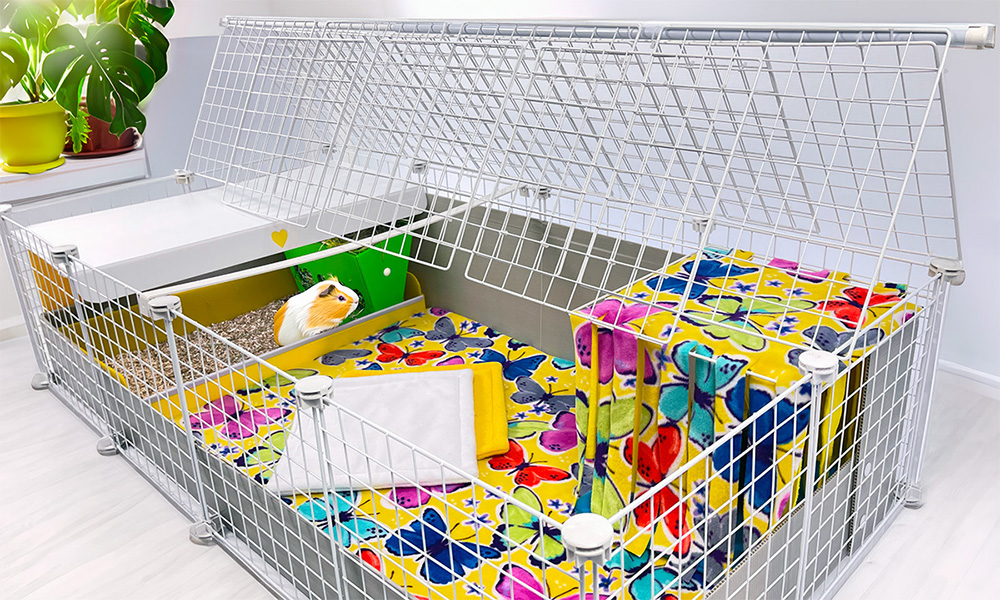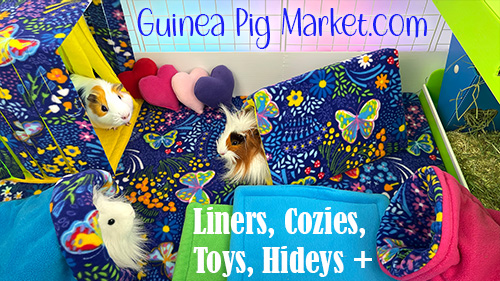The same advice here about males can be helpful if you have one of those rarer DIVA female situations as well.
Two is Company
Two males will get along the vast majority of the time. And males should have a friend, so it’s important to understand how to successfully pair them up. The odds of having two males live together happily into adulthood are about 85% to 90%, but there is a slim chance that it just won’t work out and it wasn’t a good pairing. If you have two adult males (6-12 months old or more) who’ve been living together longer than 6 months, then you can consider them bonded.
Three can be a Crowd
If you have two males now, you may not want to upset the apple cart thinking that since they get along, you can add a third. That’s a decision many people come to regret. If you have to, you have to, but know the risks going in and be prepared to have to separate them if needed. Also, be prepared for a second big cage and possibly needing to get a 4th male so that one isn’t a single. And if not in two cages, have one very big cage such that it’s possible to humanely divide the cage giving each side an appropriate amount of space. That means having a Jumbo C&C cage (2×6 grids = 7.5 feet long) preferably with lofts on each end as well.1
The odds flip with THREE males getting along into adulthood. It’s more like about a 15-20% chance it will work out in the long run. Sadly, more often than not, it won’t. Don’t be fooled if they are still young (babies through a few months old) as everything is always honky dory perhaps with some rumble-strutting, chasing, and mounting — but no hard-core fighting. That is, until their teenage and young adult guinea pig years.
You also risk breaking the bond between your original pair.
If you have two bonded males now, we do not recommend adding a third. If you have to add a third guinea pig, pay special attention to the things you need to do (listed below) to try to mitigate aggression as they vie for dominance.
The Brotherhood Botherhood
It’s a common assumption that if they are ‘brothers’ they’ll grow up together and get along great. And it can seem that way in the beginning. The thing with litter-mates is they go through their hormonal changes at the same time. It can definitely work out for some, but it can be a significant challenge for many.
The Social Hierarchy
One of them is or will be the boss. When looking to pair up a male, how they behaved on their own or with a different guinea pig is not necessarily how it will play out in a new pairing. The low pig on the totem pole may decide he’s had enough and try to assert his dominance with a new one or new group — especially adolescents or young adults (5-12 months old range). The safest bet is to look for a size differential between two males so that there is an obvious “I’m the boss and you’re not” disparity that can more quickly settle the issue.
Their Most Obvious “TELL”
Have you seen that behavior they do when they are nose-to-nose and their heads keep going up higher in the air? It’s rather a competition and a challenge. The ALPHA pig stays high, the one willing to be #2 will put his head under the head of the alpha pig.
Adapting to Change takes TIME
Big changes are stressful on guinea pigs. They need months not days or weeks to settle in enough to “let their hair down” so to speak.
Big changes include:
Even when initial introductions seem to go well, this is why you tend not to see their ‘real’ behavior until they’ve moved passed their concern about more changes coming. It can take a couple of months for the ‘bickering to begin’ because they were just sharing mutual panic about their circumstances in a ‘truce of survival.’
“Rule of THREES” when doing Introductions
When pairing up guinea pigs, especially males, use the “Rule of Threes” as your guideline for setting your expectations on their behavior.
When pairing up males (step one and two are done OUTSIDE of the cage in a neutral area). When putting a new pair or group in a cage, try to time it with a newly assembled or purchased cage, OR thoroughly clean and wash everything and rearrange items in your existing cage so that it’s new to a current resident when putting them in the cage together.
Secrets of Successful Male Bonding
As in all things guinea pig, we try to work with their nature and not against it.
Special Boar Care needed after Introductions
No matter how it goes, until you are absolutely certain they are now best buddies, be sure to check each one for bite wounds every so often. When you pick one up, hold him in your lap and use your fingertips to do a gentle finger crawl through their hair over their entire body. You are feeling for little scabs or bumps on their skin. Those incisors are sharp. If you find a scabbed over wound, make sure it isn’t infected. It should be flat and not inflamed. Sometimes the wounds get infected. It’s usually not a big deal, but needs to be cleaned out and fixed up if you find one.
Cleaning up Boar Glue! Ha ha ha
The birds and bees of boars! 🙂 When you’ve got boars you’ll be wondering about some weird stuff that gets in other boar’s hair that is really hard to get off. It’s the, um, semen, from another boar. It can get stuck on fleece or almost anywhere. It seems stronger than super glue and you frequently have to cut it out. 🙂 It can be particularly noticeable after a fiesty introduction session.
Additional Resources
1 C&C Cages
C&C Cages are kit cages made from Cubes and Coroplast. They’ve been around for over 20 years and are the best way to house guinea pigs. They are recommended by everyone — worldwide — from guinea pig enthusiasts to vets, to rescues, to humane societies and animal associations. All pet store cages are too small. The bigger the cage, the easier it is to keep clean. The bigger the cage, the more fun behavior you get to enjoy from your pet guinea pigs. You can make your own or purchase ready-to-assemble kits.













